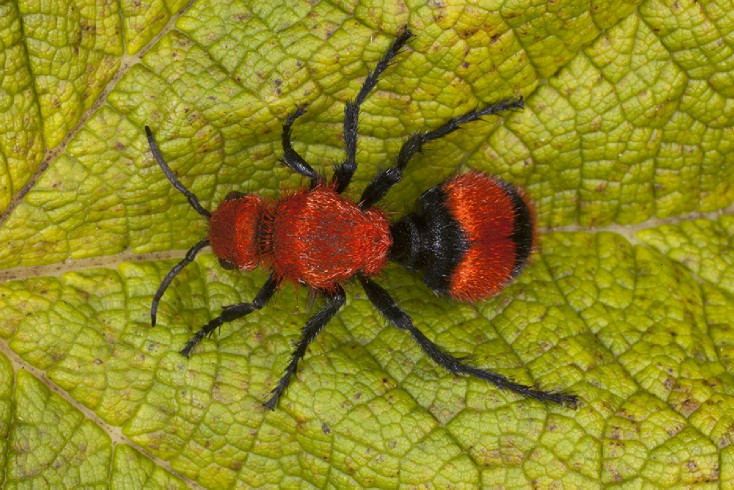Ring flash for insects
Sunday, May 18, 2014 | By: Jim Zuckerman

A great way to photograph insects is with a ring flash. This solves the problems of depth of field and movement. The flash freezes the motion of the insect, as I did with this velvet ant I photographed in my garden in Tennessee, and because so much light is produced by the ring flash (assuming you are close to the subject), you can use f/32 for complete depth of field. Macro photography, in my opinion, requires complete depth of field virtually without exception.
The Canon ring flash is expensive ($549), but you can get off-brand ring flashes for less than $100. They don't have any bells and whistles, but they do the job of providing soft light that envelopes small subjects.
The key to using a ring flash is to be close to the subject. That's why I used a 50mm macro lens for the velvet ant. This positioned the camera and lens only 5 or 6 inches away. Had I used a 100mm macro or a 180mm macro, the working distance would have been greater (like two or three feet) and therefore the light from the flash would be reduced. In addition, the light from a ring flash would not be as soft and complementary simply because of the increased distance. As the ring flash is used further from the subject, it approaches a point source of light and, like the sun or any spot light, that's a harsh type of lighting.
